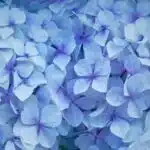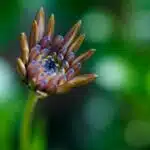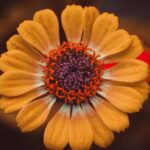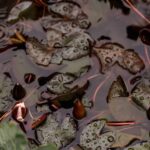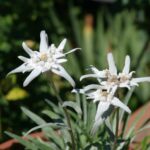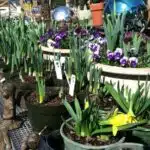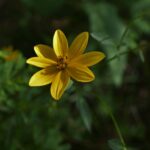It’s often said that flowers are the language of nature. With each petal, a new story is told. The United States is full of colorful stories, with 65 different types of flowers commonly blooming in its gardens and fields. From sweet-smelling roses to delicate lilies, the U.S. is brimming with beauty and life. Imagine walking through an open meadow filled with all these vibrant colors at once – it would be like stepping into a painting!
The different types of flowers found in the United States are vast and varied. From common daisies to exotic orchids, there’s something for everyone to enjoy. Whether you’re looking for an eye-catching centerpiece or a simple bouquet of wildflowers, U.S.-native florals can provide just the right accent.
This article will explore the 65 most common types of flowers found throughout the United States, including information on their characteristics and uses in landscaping, bouquets and more! Get ready to dive into the marvelous world of U.S.-native flora – let’s get started!
- Amaryllis
- Anemone
- Aster
- Azalea
- Baby’s Breath
- Bachelor’s Button
- Begonia
- Black-eyed Susan
- Bleeding Heart
- Butterfly Weed
- Calendula
- Camellia
- Carnation
- Chrysanthemum
- Clematis
- Columbine
- Coneflower
- Coreopsis
- Cosmos
- Crocus
- Daffodil
- Dahlia
- Daisy
- Daylily
- Delphinium
- Dianthus
- Echinacea
- Edelweiss
- English Lavender
- Forget-Me-Not
- Foxglove
- Freesia
- Gardenia
- Geranium
- Gladiolus
- Goldenrod
- Hibiscus
- Hollyhock
- Hosta
- Hyacinth
- Hydrangea
- Iris
- Jasmine
- Larkspur
- Lilac
- Lily
- Lily of the Valley
- Lupine
- Marigold
- Morning Glory
- Nasturtium
- Pansy
- Peony
- Petunia
- Phlox
- Poppy
- Primrose
- Queen Anne’s Lace
- Rose
- Snapdragon
- Sunflower
- Sweet Pea
- Tulip
- Viola
- Zinnia
Daisy
It’s estimated that over 500 species of flowers are native to the United States. Among them, the daisy is one of the most iconic and recognizable blooms. With a cheerful yellow-white center surrounded by bright white petals, these delicate flowers have been a symbol of innocence and purity since ancient times.
The scientific name for this popular flower is Bellis perennis, and it grows in almost every region of the country. Daisies can be found in fields, meadows, forest edges and gardens across the nation – from Hawaii to Maine. They come in several varieties, from the tall Shasta Daisy to classic English Daisy or Oxeye Daisy.
Daisies are beloved for their beauty as well as their symbolic meaning: hope, joy and new beginnings. Their cheerful faces make them excellent additions to bouquets and gardens alike; plus they’re surprisingly hardy plants that require very little maintenance or care.
Rose
The second type of flower commonly found in the U.S. is the rose. With its distinctive shape, beautiful colors, and pleasant aroma, roses have captivated admirers for centuries. This versatile flower can be used to decorate gardens and homes, as well as brighten up any special occasion with its presence. Here are three benefits of having roses around:
- Roses bring a sense of peace and tranquility to any space due to their calming scent.
- They can also symbolize love, making them perfect for romantic occasions such as anniversaries or Valentine’s Day celebrations.
- Roses also make excellent gifts for special events or holidays like Mother’s Day or birthdays because they convey meaning and emotion without having to say a single word!
Roses are incredibly popular in the U.S., and it’s easy to see why – they’re beautiful and timeless! With their delicate petals, bright hues, and sweet smell, these blooms add a touch of elegance wherever they go. Moving on from roses…
Marigold
Have you ever seen a marigold? It is an incredibly vibrant flower, with brightly colored petals that often appear in shades of orange, yellow and maroon. Marigolds are native to Central and South America and are very popular in the United States.
These flowers are considered annuals and perennials depending on the climate, making them a great option for any type of garden. They can be grown from cuttings or from seed, making them easy to propagate. The plants require full sun and moist soil for best results. Marigolds tend to be low maintenance and do not require much weeding or pruning.
Marigolds can add a lot of color to any garden and make wonderful additions to outdoor spaces. Their bright colors attract pollinators such as bees, butterflies and hummingbirds, making them beneficial for local wildlife while adding beauty to your landscape. With their easy maintenance requirements, beautiful blooms and ability to attract pollinators, marigolds are an excellent choice for any garden in the United States. Moving on from here, let’s explore the hollyhock next…
Hollyhock
The hollyhock is like a beacon of beauty in the summer months, creating an oasis of color in any garden. Its delicate petals come in many vibrant shades and its tall shape adds a unique texture to any outdoor space. There’s something special about this flower that draws us in with its charm.
The hollyhock is native to Asia, but it’s become a popular flower across the United States. It typically blooms from late spring through early autumn and can be planted from seeds or as transplants. This versatile flower can tolerate both partial shade and full sun, making it perfect for any garden.
In spite of its delicate appearance, the hollyhock is surprisingly hardy and can withstand most temperature fluctuations without issue. It’s easy to care for, requiring minimal pruning and no deadheading. All it needs is some water and sunshine to create a show-stopping display of beautiful blooms! From ornamental gardens to wildflower meadows, the hollyhock brings life wherever it grows. Onward we go now to the sunny side of things: let’s talk about sunflowers!
Sunflower
The sunflower is a ray of sunshine, the most cheerful of flowers. Its bright yellow petals spread out like rays of sunlight, cheering up any garden. Its center is made up of hundreds of tiny florets that attract pollinators like bees and butterflies.
Sunflowers are native to North America, found growing in wild meadows and along roadsides. They come in many varieties, from dwarf types with small heads to some that grow more than 10 feet tall. Sunflowers can be planted as annuals or perennials in almost all climates, from full sun to partial shade.
TIP: Plant your sunflowers on the north side of your yard so they won’t block other plants from getting enough sunlight. Planting them in groups will also make for a dramatic display!
Plus, you don’t have to worry about water too much; sunflowers are drought-tolerant and can handle periods without rain quite well. Now let’s move on to chrysanthemum – another beautiful flower common in the U.S.
Chrysanthemum
The sixth most common type of flower in the U.S. is the chrysanthemum. This flower has a long and varied history, having been cultivated in China for over 2,000 years. It’s popularity in the West dates back to the 17th century when it was brought to Europe from East Asia.
Chrysanthemums come in many shapes and sizes, as well as a variety of colors, ranging from yellow to white to pink and purple. These flowers can be seen growing in gardens across America, as well as being used in arrangements and bouquets for special occasions such as weddings or birthdays. They are also a popular choice for those wishing to make their own floral arrangements at home, thanks to their vibrant colors and long-lasting blooms.
Chrysanthemums stand out among other flowers due to their unique look, fragrant aroma, and ability to last longer than many other varieties of flowers. With its wide range of uses, it’s no wonder that this popular flower has been around for centuries and continues to be enjoyed by people all over the world today! Moving on from chrysanthemums, another popular flower found throughout the U.S. is the snapdragon…
Snapdragon
Snapdragons stand tall, their spiky petals stretching skyward. These showy flowers are a popular choice for gardens across the United States. Not only do they make an attractive addition to any landscaping project, but snapdragons also offer several other benefits. Here’s what you should know about these stunning blossoms:
Structure: Snapdragons have an interesting structure that makes them stand out from other blooms. The stems are typically tall and slender, with multiple branches extending outward. Each branch is composed of colorful petals in shades of red, yellow, purple and pink.
Benefits: Snapdragons have long been valued for their beauty and charm. They attract bees and butterflies to the garden, helping to support local pollinators. In addition, snapdragons can be harvested for their fragrant oil which can be used in potpourri or perfumes. Finally, they can also be dried and used in floral arrangements or wreaths.
Care: Caring for snapdragons is relatively straightforward and easy to manage. They prefer full sun and well-drained soil with moderate waterings when needed. Deadheading spent blooms will help encourage additional growth throughout the season. With proper care, snapdragons will bloom from late spring through early fall – adding a splash of color to your garden!
These cheerful flowers are sure to brighten up any outdoor space – making them a great choice for American gardeners looking for something special! Next up we’ll learn about carnations; another staple flower of US gardens…
Carnation
Carnations are one of the most popular flowers in the United States. These lovely blooms come in a wide variety of colors, from dazzling white to deep pink and red. Carnations also have a delightful scent that can brighten up any room. They’re often used for weddings, proms, and special occasions where their beauty is sure to take center stage.
Carnations are generally easy to care for and require little maintenance. Regular watering and light pruning will keep them looking their best throughout the year. Plus, they can bloom up to three times a year if they’re grown in the right conditions. With proper care and attention, these stunning flowers can last for months with minimal effort required on your part.
Carnations are an excellent choice if you want to add some color and fragrance to your garden or home without having to do too much work. Their long-lasting blooms make them perfect for any kind of celebration or just as a pleasant surprise when someone least expects it! Transitioning into pansy, this flower is known for its unique petal shape and beautiful hues…
Pansy
The ninth type of flower commonly found in the U.S. is the pansy. This beautiful, yet delicate flower has a distinct look and is often used for its versatility in different settings. It has large petals with bright colors that are almost too vibrant to look real, making them perfect for decorating gardens or adding a pop of color to any room.
Pansies come in a variety of colors and sizes, so they can fit into any environment. They are also easy to care for and don’t require much attention, which makes them popular with gardeners who want something that won’t take up too much time or energy. Additionally, they are relatively inexpensive compared to other types of flowers, making them an affordable option for anyone looking to spruce up their garden or home.
Pansies have been around since ancient times and were originally grown in European gardens as far back as the 16th century. Today, they are still widely available and can be found in many American homes and gardens alike, proving just how timeless this flower really is. Next up: hydrangea!
Hydrangea
The tenth type of flower commonly found in the U.S. is the hydrangea. This colorful flower is a favorite for its blooms of white, pink, and blue hues. Hydrangeas are popular among gardeners because of their versatility; they can be planted in both sunny and shady areas, with little care needed to keep them blooming during the summer months. Here are five reasons why you should consider adding hydrangeas to your garden:
- They’re low maintenance – Hydrangeas don’t require much care and attention to thrive in any environment.
- They bring vibrant color – Their unique and beautiful blossoms come in a variety of colors that will add life to your garden.
- They attract pollinators – Bees and other pollinators are naturally drawn to the nectar-rich flowers of hydrangeas, helping promote healthier gardens and ecosystems.
- They make great cut flowers – For an added touch of beauty indoors or out, snip off some hydrangea blossoms to use as centerpieces or decorations.
- They make your yard look fuller – With their large clusters, sturdy stems, and lush foliage, hydrangeas can add texture and fullness to any landscape design.
Whether you want a pop of color or just need something low-maintenance for your garden, hydrangeas are an excellent choice for any gardener looking for something special. Moving on from this delightful flower, let’s take a look at snapdragons next!
Snapdragon
Snapdragons are like a box of surprise chocolates, inviting you to dip your hand in and discover the hidden beauty inside. With its vibrant colors, oblong petals and tall stature, it’s no wonder why snapdragon is one of the most beloved flowers in the United States:
- Its sprightly stems reach up to 2 feet tall
- The flower petals form into an elongated tube shape
- It blooms in shades of pink, purple and yellow
- Its long-lasting blooms create a beautiful display
Snapdragons are an excellent choice for any garden or vase arrangement. They look great when planted with other flowers in a single row or grouped together to create a stunning mass effect. Plus, they can be dried easily and used as decorations or pressed into cards for special occasions.
By adding snapdragons to your garden or bouquet, you’ll be sure to bring some life and color to your environment – setting the scene for foxglove’s delicate beauty to follow.
Foxglove
Foxglove is like a silent sentinel, standing majestic and tall in gardens across the United States. Its soft bell-shaped blooms come in shades of pink, purple and white, symbolizing creativity and inspiration. But it isn’t just their beauty that makes these flowers so special – foxglove can also be used to make medicine to treat ailments like heart failure.
A common sight in many gardens, foxglove has a wild side too; it’s believed that fairies use its blooms as beds for their babies. This magical quality gives the flower an air of mystery and makes it an excellent choice for adding a touch of whimsy to any landscape.
TIP: Plant foxglove near vegetables or fruits to help keep pests away. The distinctive shape and color of the flower will also add structure and contrast to your garden design.
As you plan your outdoor space, consider including foxglove among other types of flowers common in the U.S., such as peony, for a truly stunning display!
Peony
Putting one foot in front of the other, it’s time to talk about peonies. This flower is one of the most popular types of flowers in the United States and for good reason. Peonies come in a variety of colors such as white, pink, yellow and even red. They have large, fluffy blooms that look like pom-poms from a distance. The petals are thick and soft to the touch when you pick them.
Peonies have been grown in gardens for centuries, making them a classic choice for many gardeners looking to add some color and fragrance to their space. They tend to bloom during late spring and early summer for an extended period of time so they will give you plenty of beauty throughout the season. Plus, their sweet fragrance can be enjoyed all summer long if you plant them strategically around your garden!
They also require minimal maintenance as they are fairly drought-tolerant once established which makes them a great option for those who don’t want to spend too much time tending to their plants. No matter what type of garden you have or how busy your life is, peonies are sure to be a welcome addition! And with that, let’s move on to coneflower…
Coneflower
Coneflowers are a garden staple across the United States, with their bright colors and unique petals. Like a beacon of hope in the summer, coneflowers bring a sense of cheer to any outdoor space. It’s no wonder they’re one of the most popular types of flowers for American gardens!
The coneflower is native to North America and is part of the daisy family. Its unique shape is made up of long petals radiating from a central disk and its vibrant colors range from deep purple to shades of red and yellow. These striking flowers attract bees and butterflies, making them an important source of nectar for pollinators. They also make great cut flowers and can be used in dried arrangements.
Coneflowers are easy to grow and maintain, as they thrive in sunny areas with well-drained soil. They’re drought tolerant and usually don’t require much maintenance once established. This makes them perfect for beginner gardeners or those who don’t have time to tend to their flower beds daily. In addition, coneflowers are hardy plants that can survive temperatures below 0 degrees Fahrenheit! With their cheerful colors and low maintenance requirements, coneflowers are an obvious choice for any American garden enthusiast looking for a reliable bloomer throughout the season.
Lavender
Lavender is a popular flower in the United States. It’s known for its fragrant scent and vibrant purple color. With its unique, star-shaped petals, it adds beauty to any garden or bouquet.
Lavender is considered an easy-care flower that prefers full sun and well-drained soil. It doesn’t require much fertilizer, but regular watering will help keep the plant healthy and blooming for several months. The plant itself grows between one to three feet tall and can spread up to two feet wide.
In addition to its beauty, lavender has many uses. It’s often used as a natural remedy for anxiety, insomnia, and depression. Its oil can also be used in aromatherapy and cosmetic products like lotions and soaps. Additionally, it’s a popular choice for cut flowers that can add a pop of color to any vase or arrangement.
By planting lavender in your own garden or using it in your home decor, you can enjoy this beautiful flower all year round!
Frequently Asked Questions
What Is The Best Soil Type For Growing These Flowers?
When it comes to growing flowers in the United States, soil type is an important factor. Different types of flowers thrive in different soils and it’s important to know which one is best for each flower before planting. So, what is the best soil type for growing flowers common in the U.S.?
When considering soil types, there are a few that work well with most flowers. Loamy soil or a mix of sandy and clay soils is generally recommended for most plants grown in the U.S., as they provide good drainage while still retaining enough moisture to support healthy growth. Organic matter such as compost or manure can also be added to this kind of soil to improve fertility and nutrient availability.
The best way to determine which kind of soil your plant needs is by researching the particular species you’re looking to grow, as some may require slightly different conditions than others. Additionally, local climate should also be taken into consideration when deciding on a suitable soil type for your flowers. With proper research and preparation, you can ensure that your garden is filled with beautiful blooms that will last all season long!
What Is The Best Way To Provide Adequate Sunlight For These Flowers?
Providing adequate sunlight for flowers is the key to a beautiful and healthy bloom. Like a sunflower reaching for the rays of the sun, flowers need ample amounts of light to grow and thrive. However, it can be tricky to know how much sunlight is needed for different types of flowers commonly found in the U.S.
Just as plants reach toward the warmth of the sun, so too do gardeners have to be mindful when exposing their plants to its rays. Too little sunlight can cause stunted growth or discoloration; too much will cause them to wilt and die. It’s like Goldilocks-finding that ‘just right’ amount is essential for success!
The best way to provide adequate sunlight for these flowers is by understanding their specific needs. Place taller varieties on one side of your garden, while shorter varieties should go on the other side – this ensures they get enough light without getting scorched or shaded out. Additionally, you’ll want to choose an area that gets a few hours of direct sunlight each day – usually four to six hours should do the trick!
TIP: Use a gardening app or website such as PlantSnap or GardenTags that can help identify which type of flower you have and what its specific needs are in terms of sunlight requirements!
How Often Should These Flowers Be Watered?
Watering flowers is like giving them a refreshing drink of life. When tending to our beloved blooms, we want to ensure they are receiving the right amount of hydration. The question at hand then becomes: how often should these flowers be watered?
The answer depends on several factors, such as the type of flower and the environment in which it resides. In general, most flowers need to be watered once or twice a week, but there are exceptions. For example, cacti and succulents may only require water once every few weeks since they store moisture in their leaves. On the other hand, annuals may need more frequent watering since they don’t have roots that can go deep into the soil for moisture.
No matter what type of flower you have in your garden, it’s important to monitor its needs and adjust your watering schedule accordingly. Check the soil near the stem every few days – if it’s dry an inch below the surface, give your flower a drink! If you’re unsure about how often you should water your flowers, consult with a local plant expert to get tailored advice.
How Can I Protect These Flowers From Pests And Disease?
Protecting flowers from pests and disease is an important part of keeping a healthy garden. There are several steps that can be taken to ensure the safety of these plants, including proper care and regular maintenance. Let’s look at some of these steps in more detail:
• Care & Maintenance: o Watering: When growing flowers in the U.S., it’s important to water them regularly to keep them healthy. Depending on the type of flower, this could mean watering once or twice a week, or even daily during particularly hot weather. o Pruning: Regular pruning can help promote healthy growth by removing dead leaves and branches. This also helps reduce the risk of disease and pest infestation. • Pest & Disease Prevention: o Natural Remedies: There are a number of natural remedies that can be used to protect flowers from pests and diseases. These include using companion plants to repel insects, or applying homemade insecticides like garlic spray or neem oil to discourage pests from invading your garden. o Chemical Treatments: If natural remedies are not enough, there are chemical treatments available for controlling pest populations and treating diseases in plants. It’s important to use these products carefully, as they can have harmful effects if not used correctly.
By taking the necessary steps for caring for flowers properly and preventing pests and disease, you can ensure that your garden blooms with beautiful blooms year-round!
Are There Any Special Fertilizers To Use For These Flowers?
When it comes to taking care of flowers, fertilizers are an important part of the equation. Different types of flowers require different fertilizers, so it’s important to understand which type of fertilizer is best for the specific flower you’re growing. In the U.S., there are many varieties of common flowers, and each one has its own special fertilizer needs.
For example, roses need a fertilizer that is high in potassium and phosphorus, while daisies need a fertilizer that contains magnesium and iron. When choosing a fertilizer for your flowers, make sure the label states that it’s suitable for your particular flower species. Additionally, you’ll want to make sure you’re using the right amount of fertilizer for each plant – too much or too little can be detrimental to their health.
It’s also important to consider how often you should be fertilizing your flowers. Generally speaking, most plants need to be fertilized every two weeks or so during their growing season. You should also pay attention to any instructions on the packaging regarding frequency or application methods – these vary from product to product. With proper attention and the right choice of fertilizer, your common U.S. flowers will thrive!
Conclusion
In conclusion, the United States is home to a variety of flowers with 65 native species. With proper care and attention, these flowers can thrive in any garden. The best soil for growing them should be well-draining, and they should be given adequate sunlight daily. Watering them every other day or so will help ensure that they remain healthy and vibrant. In addition to providing the right environment for them, it’s important to protect them from pests and diseases by using insecticides or fungicides if necessary. Lastly, fertilizing the flowers with special fertilizers designed specifically for them can help keep them looking their best year-round.
Surprisingly, among these 65 types of flowers, some have been around since the beginning of time! For example, roses are believed to have existed since 35 million years ago and still remain a popular flower today. This statistic is proof that even in a world full of changes over time, some things stay the same – like our love for beautiful flowers!
The United States has many amazing species of flowers that anyone can appreciate. Whether you’re just starting out in gardening or are an experienced gardener looking for something new to try out in your garden, these 65 types of flowers are sure to bring delight and admiration no matter where they’re planted!













